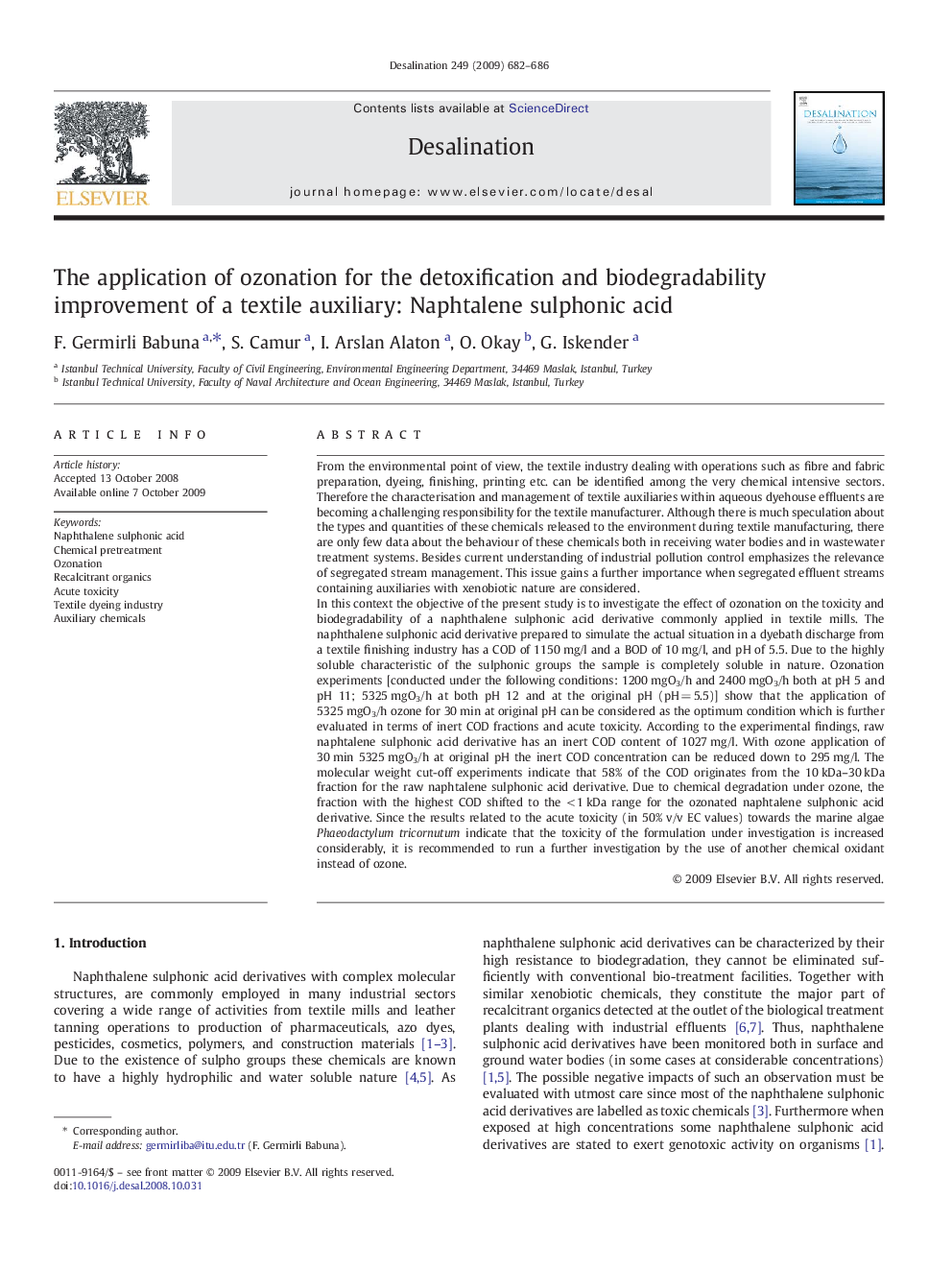| کد مقاله | کد نشریه | سال انتشار | مقاله انگلیسی | نسخه تمام متن |
|---|---|---|---|---|
| 626478 | 882870 | 2009 | 5 صفحه PDF | دانلود رایگان |

From the environmental point of view, the textile industry dealing with operations such as fibre and fabric preparation, dyeing, finishing, printing etc. can be identified among the very chemical intensive sectors. Therefore the characterisation and management of textile auxiliaries within aqueous dyehouse effluents are becoming a challenging responsibility for the textile manufacturer. Although there is much speculation about the types and quantities of these chemicals released to the environment during textile manufacturing, there are only few data about the behaviour of these chemicals both in receiving water bodies and in wastewater treatment systems. Besides current understanding of industrial pollution control emphasizes the relevance of segregated stream management. This issue gains a further importance when segregated effluent streams containing auxiliaries with xenobiotic nature are considered.In this context the objective of the present study is to investigate the effect of ozonation on the toxicity and biodegradability of a naphthalene sulphonic acid derivative commonly applied in textile mills. The naphthalene sulphonic acid derivative prepared to simulate the actual situation in a dyebath discharge from a textile finishing industry has a COD of 1150 mg/l and a BOD of 10 mg/l, and pH of 5.5. Due to the highly soluble characteristic of the sulphonic groups the sample is completely soluble in nature. Ozonation experiments [conducted under the following conditions: 1200 mgO3/h and 2400 mgO3/h both at pH 5 and pH 11; 5325 mgO3/h at both pH 12 and at the original pH (pH = 5.5)] show that the application of 5325 mgO3/h ozone for 30 min at original pH can be considered as the optimum condition which is further evaluated in terms of inert COD fractions and acute toxicity. According to the experimental findings, raw naphtalene sulphonic acid derivative has an inert COD content of 1027 mg/l. With ozone application of 30 min 5325 mgO3/h at original pH the inert COD concentration can be reduced down to 295 mg/l. The molecular weight cut-off experiments indicate that 58% of the COD originates from the 10 kDa–30 kDa fraction for the raw naphtalene sulphonic acid derivative. Due to chemical degradation under ozone, the fraction with the highest COD shifted to the < 1 kDa range for the ozonated naphtalene sulphonic acid derivative. Since the results related to the acute toxicity (in 50% v/v EC values) towards the marine algae Phaeodactylum tricornutum indicate that the toxicity of the formulation under investigation is increased considerably, it is recommended to run a further investigation by the use of another chemical oxidant instead of ozone.
Journal: Desalination - Volume 249, Issue 2, 15 December 2009, Pages 682–686